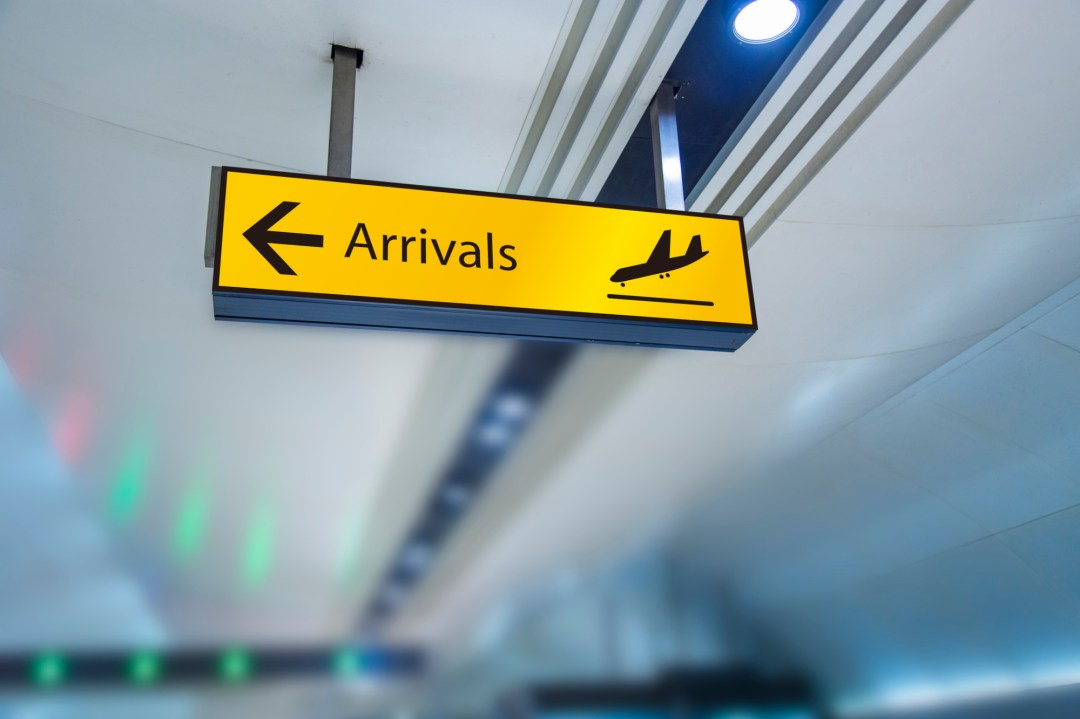The Home Office opened Britain’s doors to record numbers of migrants without properly assessing the risks or consequences, according to a damning new report from parliament’s Public Accounts Committee. The report, released overnight, finds that the department ‘made changes to the Skilled Worker Visa route without a full assessment of the risks or potential impacts, including the risks of non-compliance with visa rules and exploitation of migrant workers.’
The Tories turned on the immigration tap without asking what would happen when these workers’ visas expired – or what they would do while they were here
In other words, the Tories turned on the immigration tap without asking what would happen when these workers’ visas expired – or what they would do while they were here. The result: the so-called ‘Boriswave’. The reason: it ‘was busy with other priorities, including the new Ukraine schemes’.
The Skilled Worker route was rapidly expanded in response to labour shortages, particularly in social care, from 2022 onwards. But the Home Office failed to consult other departments on how this sudden influx – nearly 1.2 million people over four years – would affect their sectors or public services. The result was chaos: three times more migrants came than officials had anticipated, and the Home Office still hasn’t assessed whether the scheme is achieving its objectives.
The committee’s first observation is damning: that the Home Office lacked a ‘full understanding of the potential consequences of changes for different sectors of the labour market’. In plainer English: it didn’t think about how a flood of new working-age migrants (and their dependents) might affect salaries, services or housing.
Worse still, officials were blindsided by the scale of the take-up. Government forecasts expected 360,000 Skilled Worker Visa holders in the three years to April 2024; the actual number was 931,000. And while the report acknowledges that the visa route helped employers to fill roles in struggling sectors, it notes that 80 per cent more migrants are staying permanently than in 2021.
One particularly shocking statistic: in 2022, just 53 Skilled Worker Visa holders applied for asylum when their visa ended. Last year that number had skyrocketed to 5,300. This raises questions about whether the visa route is being used appropriately – or whether some migrants are arriving under false pretences, only to remain by exploiting other parts of the system.
Perhaps the most troubling finding is the evidence of worker exploitation. The care sector – which saw a sharp increase in foreign recruits – is singled out as especially vulnerable. The visa route was opened in haste, and the Home Office ‘failed to understand the risks’ of non-compliance. While officials quickly spotted signs of abuse, they were painfully slow to act.
The report warns that the wider government response to tackling exploitation has been ‘insufficient’ and that the Home Office’s own enforcement has been ‘slow and ineffective’. It has failed to clamp down on dodgy recruitment agents and has largely taken sponsoring employers at their word when it comes to compliance.
Worse, it appears the department has little idea whether visa holders are actually obeying the rules. Only 1 per cent of sponsors were referred for enhanced compliance checks last year. The government, the report states bluntly, ‘does not understand the extent to which people are complying with the terms of their visa and leaving the United Kingdom when they should’.
Britain’s economy will always require some level of migration to plug workforce gaps – even the most hardline anti-immigration politicians accept that. But the Public Accounts Committee has laid bare a system that was rushed, uncoordinated and badly policed. Opening the doors without a plan for enforcement, oversight or long-term integration wasn’t just careless – it was reckless.
What’s more troubling is the pretence – both then and now – that this surge in migration was some kind of surprise. It wasn’t. It was a deliberate policy choice, arguably necessitated by a labour market under pressure. In the summer of 2022, job vacancies hit nearly 1.3 million, while more than five million Britons remained on out-of-work benefits. With no serious prospect to wean the country off welfare or to boost domestic recruitment, the government did what was easiest: it reached for the migration lever.









Comments